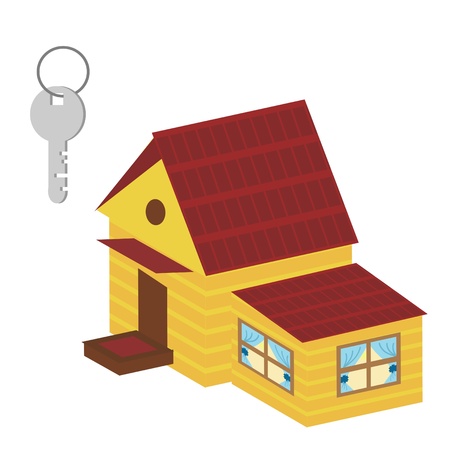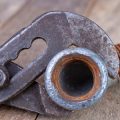1. Understanding Water Pressure in Your Home
Water pressure is one of those things you don’t really think about—until something goes wrong. Whether your shower turns into a trickle or your washing machine takes forever to fill, water pressure plays a big role in how comfortable and functional your home feels every day.
What Is Water Pressure?
In simple terms, water pressure is the force that pushes water through the pipes in your home. It’s measured in pounds per square inch (psi). Most homes in the U.S. have water pressure that falls between 40 and 80 psi. Too low, and fixtures don’t work properly; too high, and you could damage your plumbing system.
How Water Pressure Works in a Residential Plumbing System
Your home’s plumbing system relies on consistent water pressure to move water from the main supply line to sinks, showers, toilets, and appliances like dishwashers and washing machines. Water can come from a municipal supply or a private well, but either way, it needs enough pressure to reach all parts of your house efficiently.
Main Factors That Affect Water Pressure:
| Factor | Description |
|---|---|
| Elevation | If your home is located uphill from the water source, gravity can reduce pressure. |
| Pipes | Aging or clogged pipes can restrict flow and lower pressure. |
| Main Supply Line | The size and condition of the main water line affects how much water enters your home. |
| Plumbing Fixtures | Multiple fixtures running at once can cause temporary drops in pressure. |
| Pressure Regulator Valve (PRV) | This device controls incoming pressure from the city supply. A malfunctioning PRV can lead to problems. |
Why Water Pressure Matters
The right water pressure ensures that everyday activities—like taking a shower or doing laundry—go smoothly. It also protects your appliances. For example, dishwashers and washing machines are designed to operate within specific pressure ranges. Too little pressure may prevent them from working efficiently; too much could shorten their lifespan or cause leaks.
A Few Signs You Might Have a Water Pressure Problem:
- Your shower stream feels weak or inconsistent
- The toilet takes longer than usual to refill after flushing
- Your dishwasher or washing machine isn’t cleaning properly
- You hear banging noises in your pipes (also known as “water hammer”)
- You notice leaks around fixtures or connections
If youre experiencing any of these issues, its likely time to take a closer look at your homes water pressure system. In upcoming sections, well explore common causes of water pressure problems and what you can do to fix them.
2. Common Signs of Water Pressure Problems
If youre a homeowner, keeping an eye on your water pressure is just as important as any other home maintenance task. Water pressure thats too high or too low can cause all kinds of issues—from annoying inconveniences to serious damage. Here are some telltale signs that your homes water pressure might not be where it should be.
Weak Showers and Faucets
One of the most noticeable signs of low water pressure is a weak shower stream or slow-flowing faucets. If you find yourself struggling to rinse off soap or fill a sink, theres a good chance your water pressure needs attention.
Slow-Filling Appliances
Appliances like washing machines and dishwashers depend on consistent water pressure to function properly. If these appliances are taking longer than usual to fill up or complete cycles, low water pressure could be the culprit.
Noisy Pipes
Banging, rattling, or whistling pipes—often called “water hammer”—can indicate high water pressure. This not only creates noise but can also lead to long-term pipe damage if left unchecked.
Toilet Tank Refills Slowly
If your toilet tank takes more time than usual to refill after flushing, it might be another sign of reduced water pressure in your plumbing system.
Sudden Changes in Water Flow
If your water flow suddenly becomes strong then weak—or vice versa—that inconsistency could point to fluctuating pressure levels, often caused by valve issues or sediment buildup.
Quick Reference Table: Symptoms and What They Might Mean
| Symptom | Possible Cause | Pressure Type |
|---|---|---|
| Weak shower stream | Clogged pipes, valve issue | Low Pressure |
| Noisy or banging pipes | High velocity water flow | High Pressure |
| Slow-filling washer/dishwasher | Restricted flow, low supply | Low Pressure |
| Toilet tank fills slowly | Low incoming water flow | Low Pressure |
| Sputtering faucets | Aerator blockage or air in pipes | Inconsistent Pressure |
When to Take Action
If youre noticing one or more of these signs regularly, its a good idea to investigate further. In many cases, simple fixes like cleaning faucet aerators or adjusting the main shutoff valve can help. But sometimes, professional inspection may be necessary to get things back on track.
![]()
3. Typical Causes of Low or High Water Pressure
Water pressure issues can be frustrating, especially when youre trying to take a shower or wash dishes. Understanding the root causes behind low or high water pressure is the first step to solving the problem. Below are some of the most common reasons homeowners experience fluctuating water pressure, along with tips on how to identify them.
Clogged Pipes
Over time, minerals from hard water, rust, and debris can build up inside your homes plumbing system. This buildup narrows the interior of the pipes, restricting water flow and leading to low pressure at your faucets and showerheads.
Signs of Clogged Pipes:
- Reduced water flow in one or more fixtures
- Gurgling sounds when using water
- Visible discoloration in water due to rust
Faulty Pressure Regulator
A pressure regulator is a device that controls the water pressure coming into your home. If this component malfunctions, it can cause either very low or excessively high water pressure. Not every home has one, but if yours does, its worth checking.
Symptoms of a Bad Pressure Regulator:
- Sudden changes in water pressure throughout the house
- Banging noises in pipes (also known as “water hammer”)
- Very high or very low pressure at all fixtures
Municipal Supply Issues
Sometimes, the problem doesnt start inside your home at all. Your local water utility might be experiencing problems such as main line leaks, maintenance work, or high demand during peak hours. These external factors can temporarily lower your water pressure.
How to Identify Municipal Issues:
- Neighbors are experiencing similar problems
- No changes made to your homes plumbing system recently
- City alerts or notifications about ongoing maintenance work
Main Shut-Off Valve Not Fully Open
If your main shut-off valve isn’t completely open, it can restrict water flow into your home. This valve is typically located where the main water line enters your house—often near the water meter.
Quick Tip:
Check that the valve handle is turned fully counterclockwise. If its partially closed, it could easily be the source of low pressure.
Old or Corroded Plumbing Systems
If you live in an older home with galvanized steel pipes, corrosion over time may be reducing your pipe diameter and affecting pressure. In these cases, repiping may be necessary for long-term improvement.
Common Indicators:
- Uneven pressure in different rooms
- Visible rust spots on exposed pipes
- Frequent pipe leaks or repairs needed
Quick Reference Table: Common Water Pressure Problems and Causes
| Issue | Possible Cause | Description |
|---|---|---|
| Low Pressure in One Fixture | Clogged aerator or pipe section | Buildup of sediment or debris restricting flow locally |
| Sporadic High/Low Pressure Everywhere | Faulty pressure regulator | The regulator may not be maintaining consistent levels |
| Sudden Drop in Pressure Throughout Home | Main shut-off valve partially closed or city supply issue | A quick check of valves and city notices can help identify this issue |
| Poor Pressure Over Time in Older Homes | Aging pipes with corrosion buildup | Narrowed pipe openings reduce overall flow capacity |
Troubleshooting these typical causes can go a long way toward restoring proper water pressure in your home. In many cases, identifying whether the issue lies within your plumbing system or outside of it will guide you toward the right fix.
4. DIY Troubleshooting Tips for Homeowners
If youre experiencing low or inconsistent water pressure at home, there are a few simple checks and fixes you can try before calling in a professional plumber. These steps can help you pinpoint the issue and, in some cases, resolve it on your own—saving you both time and money.
Check All Faucets and Fixtures
Start by identifying whether the problem is isolated to one fixture or affects the entire house. Turn on faucets in different rooms to compare water pressure. If only one location has low pressure, the issue may be limited to that fixture.
What to Look For:
- Aerator blockage: Unscrew the faucet aerator and check for debris or mineral buildup. Clean or replace if needed.
- Showerhead clog: Soak showerheads in vinegar overnight to dissolve scale buildup.
Inspect the Main Shut-Off Valve
Your homes main shut-off valve controls water flow from the municipal line. If it’s not fully open, it can reduce pressure throughout your house.
How to Check It:
- Gate valve: Turn the wheel counterclockwise as far as it will go.
- Ball valve: Make sure the lever is parallel to the pipe.
Test Your Pressure Regulator (If You Have One)
A faulty pressure regulator can cause sudden drops in water pressure. Not every home has one, but if yours does, its usually located near where the main water line enters your home.
If you suspect its not working correctly, you can use a pressure gauge (available at hardware stores) to test water pressure at an outdoor hose bibb. Normal residential pressure ranges between 40–60 psi.
| Pressure Reading | Status |
|---|---|
| < 40 psi | Might indicate low pressure; consider adjusting or replacing regulator |
| 40–60 psi | Normal range |
| > 80 psi | Too high; could damage pipes and appliances |
Look for Leaks Around Your Home
A hidden leak in your plumbing system can lower water pressure and increase your utility bill. Walk around your home and inspect exposed pipes, ceilings, walls, and floors for signs of leaks like damp spots, mold growth, or musty smells.
Try This Simple Test:
- Tightly shut off all faucets and appliances that use water.
- Check your water meter reading and note the number.
- Avoid using any water for two hours, then recheck the meter.
If the number has changed, you likely have a leak somewhere.
Troubleshoot Outdoor Plumbing Fixtures
If your irrigation system or outdoor spigots have poor pressure, they may have separate issues such as clogged filters or underground leaks. Also check hose attachments for blockages or wear-and-tear.
A Few Tools That Can Help
| Tool | Purpose |
|---|---|
| Basin wrench | Tightens/loosens hard-to-reach fittings under sinks |
| Teflon tape | Adds seal to threaded pipe joints to prevent leaks |
| Pliers & adjustable wrench | Tighten connections or remove fixtures easily |
| Pressure gauge | Tells you exact PSI from a hose bibb or faucet |
Tackling basic troubleshooting yourself can reveal whether it’s something minor like a clogged aerator—or something more complex that needs professional attention. Either way, understanding your homes plumbing system empowers you to make smarter decisions when dealing with water pressure issues.
5. When to Call a Professional Plumber
If you’ve tried basic fixes like cleaning faucet aerators, checking your pressure regulator, or inspecting for visible leaks but still face water pressure issues, it might be time to bring in a professional. Some plumbing problems are more complex than they seem and require specialized tools and expertise to resolve safely and effectively.
Signs You Need a Licensed Plumber
Here are some common scenarios where calling a licensed plumber is not just helpful—it’s essential:
| Issue | Why You Need a Pro |
|---|---|
| Sudden and severe drop in water pressure | This could indicate a major leak or pipe burst that needs immediate attention. |
| No water coming from fixtures | A plumber can determine if the issue lies within your home’s system or the municipal supply line. |
| Unusual sounds in pipes (banging, whistling) | This might point to air in the pipes or high pressure that requires professional diagnosis. |
| Water pressure fluctuates throughout the day | A plumber can identify if this is due to faulty pressure regulators or other internal system issues. |
| Signs of hidden leaks (water stains, mold, increased bills) | A licensed plumber uses tools like leak detection equipment to find and fix issues behind walls or underground. |
What a Plumber Can Do That You Cant
A certified plumber has access to specialized diagnostic tools such as pressure gauges, camera inspection systems, and leak detection devices. They’re trained to work with local building codes and ensure any repairs are done safely and legally. Attempting DIY fixes on complex plumbing problems can often make things worse or even cause damage that’s expensive to repair later on.
The Importance of Hiring Licensed Professionals
Not all plumbers are created equal. Make sure to hire someone who is licensed and insured in your state. This protects you from liability and ensures the work meets local regulations. If youre unsure, ask for their license number and check with your states licensing board.
Tip: Ask for a Diagnostic Assessment
If youre hesitant about committing to full repairs right away, many plumbing companies offer diagnostic assessments. This gives you an expert opinion on what’s wrong without diving into costly repairs immediately.
6. Preventive Measures and Long-Term Solutions
Keeping your homes water pressure steady and reliable doesnt have to be complicated. With a few smart habits and the right tools, you can avoid future plumbing headaches. Here are some practical steps homeowners in the U.S. can take to prevent water pressure issues over the long run.
Routine Plumbing Inspections
Regularly checking your plumbing system can help catch small issues before they turn into major problems. At least once a year, inspect visible pipes for leaks, corrosion, or mineral buildup. Also, pay attention to any sudden changes in water flow or unusual noises coming from your plumbing.
What to Check During an Inspection
| Component | What to Look For |
|---|---|
| Pipes | Leaks, rust, or white mineral deposits |
| Faucets & Showers | Inconsistent water flow or low pressure |
| Water Heater | Sediment buildup that may restrict flow |
| Main Shutoff Valve | Ensure it’s fully open and functional |
Install a Pressure-Reducing Valve (PRV)
If your home has high incoming water pressure from the municipal supply, installing a PRV is a smart move. These valves automatically reduce the pressure entering your home’s plumbing system, helping protect your pipes and appliances from damage.
Benefits of a Pressure-Reducing Valve
- Extends the life of your plumbing system
- Lowers risk of leaks and burst pipes
- Helps maintain consistent water pressure throughout the house
- Can reduce water waste and lower utility bills
Keep Your Plumbing System Clean and Maintained
Buildup inside pipes—like calcium deposits in areas with hard water—can narrow passageways and cause pressure drops. Consider using a water softener if you live in a hard water region. You should also flush out sediment from your water heater once or twice a year to maintain optimal flow.
Simple Maintenance Tips:
- Use strainers on faucets to catch debris before it enters pipes
- Avoid pouring grease or food scraps down drains
- Schedule professional plumbing maintenance every couple of years
By taking these preventive steps, you’ll enjoy more consistent water pressure while minimizing costly repairs down the road.


